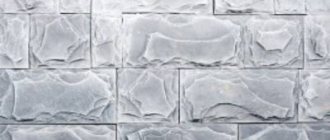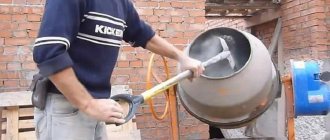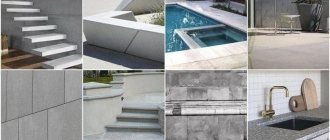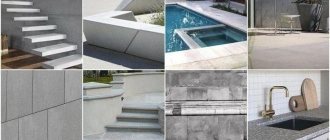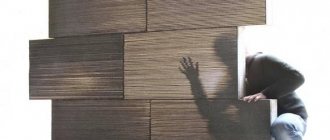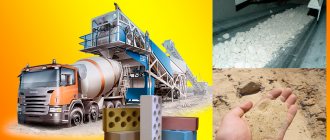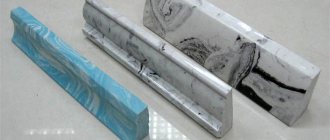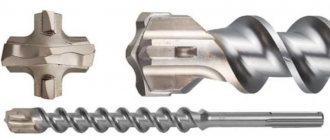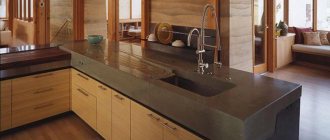What is marble and where is it used?
Marble is a unique material that has been used in the decoration of buildings and interiors for many centuries. But not everyone can afford such finishing, since marble is not only a rare material, but also quite expensive financially.
Deposits of high-quality marble are located in hard-to-reach places, and its extraction is carried out using special equipment that must be lifted into the mountains and installed. Both the extraction and delivery and processing of the material increase its cost by an order of magnitude.
Physico-mechanical properties of marble.
Thanks to the use of new technologies constantly being developed in the construction industry, the range of materials for construction has been significantly expanded. Now it is possible to make marble from concrete with your own hands and do it in normal home conditions, without the use of expensive equipment.
To make marble from concrete, you will need the following materials:
- cement grade M400 or higher;
- water;
- plasticizer S-3;
- polyurethane mold;
- fine-grained sand;
- polyethylene film;
- pigment additive;
- fine gravel as filler;
- drill and mixer attachment.
Natural marble is an expensive luxury. Therefore, artificial marble made from concrete sometimes seems to be a practical and profitable option. To obtain a good imitation that is very similar to natural stone, there are many technologies that are suitable for use at home.
Caring for homemade liquid stone
In order for furniture, plumbing fixtures or decorative items made from composite to last a long time and always remain beautiful, you need to follow a number of rules:
- do not cut food directly on the countertop;
- do not place cups, plates, or pots with hot food or water;
- do not pour boiling water into the sink;
- wash products with a soft sponge and soap or other detergents, but without abrasives;
- if necessary, treat with polishing pastes (to restore shine).
Liquid granite is a durable, reliable, moisture-resistant coating that is an excellent alternative to expensive natural materials. It fits perfectly into the interior and serves as its decoration, and with proper maintenance it will please the owners for many years.
Production of artificial marble
Mini-factory for the production of marble from concrete.
Natural marble is a stone with heterogeneous colors, a granular structure, and with veins running through the entire thickness. The stone can be pink, blue or snow-white, gray or black. Other colors are also found: green, red, yellow, purple. You can create a material that imitates marble from gypsum: the result is a dense mass, devoid of pores. But this method will not work if the product is planned to be used in a room with high humidity. You can consider alternative methods that make it possible to make marble yourself.
The simplest technology is that concrete marble is cast in molds from a mixture of sand and cement. It turns out to be very strong, impermeable to moisture, and looks very much like the real thing. But it must be taken into account that thin tiles will be fragile, and if you make them thicker, they will turn out to be too heavy. It is possible to make, for example, a tabletop from such an imitation stone, but the furniture must have a massive body that will allow it to withstand the considerable weight of the slab. You can also make a thin version, using a wooden tabletop as a basis.
In order to end up with a cast slab that is indistinguishable from real stone, you will need to stock up in advance on the materials and tools necessary for the work. It is necessary to have a mold made of polyurethane or other material, dyes and plasticizers, which will need to be mixed with the cement mixture. For a construction mixer, you will need a mixer and drill attachments, as well as a short rule, a spatula.
Advantages of marble plaster
Decorative coating based on marble chips has the following advantages:
• the composition includes components of natural origin, which makes it possible to use plaster for interior decoration without threatening the health of household members;
• a variety of color solutions, crumb parameters and combinations of raw materials with other minerals allows you to create an interesting design that harmoniously fits into the overall concept of the interior or exterior;
• the technique of applying the working mixture to the surface is easy to master, this allows you to save on attracting specialists to the work;
• the physical properties of marble give the finish high strength, resistance to mechanical damage and exposure to atmospheric factors;
• the microclimate in the room will always be healthy and favorable, which is ensured by the vapor permeability of the plaster;
Step-by-step instructions for making marble from concrete
Which technology is best used to make marble from concrete must be decided depending on the specific conditions of use. The basic principles are the same. Making artificial marble at home will look like this:
Table of approximate correspondence between class and grade of concrete.
- The first stage is preparatory. The mold (or molds) must be thoroughly washed and dried. It can be of any size: for example, it can be specially made in accordance with the required values for the kitchen wall. To prepare the solution, you need to mix the dry ingredients until smooth: sand, pebbles and cement. After receiving the composition, pour in almost all the water, add the plasticizing ingredient. Continue kneading until the mixture is as smooth as possible.
- Add the rest of the water, then the dye - it must be introduced in portions of different sizes, always in different parts of the container. In this way, uneven mixing of the solution and color is achieved, which makes the artificial material more similar to natural stone.
- Filling the mold with solution. When the dye disperses in thin veins throughout the cement mass, we can consider that the composition is finally ready. Now you can move on to the most important phase of the technological process. The mold should be placed on a smooth surface - this will help prevent bending of the walls and bottom. Pour the solution into it. Using a spatula, the edges of the mold are cleaned of excess sagging, which can affect the appearance and smoothness of the surface of the slab, then the surface is leveled as a rule and covered with polyethylene.
The larger the artificial stone slab, the more likely it is to break due to voids inside. Therefore, you should not neglect the use of a vibrating table, which will help make the structure more continuous. If it is absent or impossible to use, you should try not to remove the mixer from the mixture while mixing - this way fewer air bubbles will form.
Mixture composition
The main components of granite concrete are:
- fine sand;
- cement binder;
- granite crushed stone (small pebbles, gravel);
- water;
- special additives to give the solution additional characteristics.
The strength of granite concrete absolutely depends on the properties of the aggregate. Granite chips are an ideal option for high-grade concrete mortar. It is extracted from hard rocks by blasting them. Large blocks are crushed to produce granite crushed stone, which must be sieved. Granite in combination with sand forms the skeleton of an artificial stone, giving excellent resistance to stress and reducing shrinkage. This is heavy concrete with a specific density of 1800-2500 kg/m3.
Stone broken into small fractions improves the characteristics of the concrete solution.
How to get ready-made marble or “marble concrete”
Scheme for preparing a concrete mixture.
The mass poured into the mold will harden for about ten days. You should not interfere with the process, as is done when performing some other work with cement. For example, there will be no need to regularly moisten the surface: the solution will be covered with plastic film, a material that will prevent liquid from escaping too quickly from the thickness of the concrete mass. After the slab has completely hardened, it must be lifted, turned over, and then the form removed from it, like a cover.
To increase the strength of concrete, you can additionally reinforce it with wire. To do this, it is sunk into molds after the cement-sand mixture has been poured into them. The solidification of the contents of the forms must be complete.
One should not think that in order to obtain high-quality concrete, the technology must be particularly complex.
In fact, all the necessary actions can be performed in a city apartment.
The output is a material with low porosity, resistant to household chemicals, and moisture resistant. If necessary, the slab can be polished: to do this, its surface will need to be treated alternately with alcohol, a transparent polish, and then again with alcohol. Alcohol should be used only after the layer of polish has dried, but it does not need to be dried.
Manufacturing of building materials
To obtain a high-quality solution, proportions must be observed.
To calculate the number of components, it is necessary to select the appropriate grade of concrete for the task. The dry ingredients are thoroughly mixed in a concrete mixer strictly according to the recipe. Water and necessary additives are gradually added. The components must be free of impurities, the sand has been sifted, and the water has been purified (suitable for drinking). The table shows everything you need to prepare concrete on granite:
| Materials | Tools |
| Granite crushed stone | Shovel |
| Cement | Volumetric kneading container |
| Sand | Sieve |
| Slag or expanded clay | Master OK |
| Water | Buckets for water and ready-made solution |
| Additives | Hammer |
The solution is prepared immediately before use. For example, the amount of mixture for the foundation is calculated by the formula V=K*(L*B*H), where V is the volume of the solution, K is the shrinkage coefficient, L is the length, B is the width, H is the height of the foundation. Factory production is more expensive, but provides:
- recipe accuracy;
- strict laboratory control;
- quality passport.
Uses of Concrete Marble
Imitation of natural marble is used quite widely: in the exterior decoration of residential buildings, in landscape design, and in the creation of columns, balustrades, for the design of sidewalks, fountains, in the framing of flower beds and vases.
Concrete products have many advantages, which are difficult to dispute. This is, first of all, accessibility for a wide range of consumers with a wide range of incomes. The material turns out to be very lightweight - it can be used for cladding walls, inclined surfaces located at a certain angle. It will not require additional processing. Both the thickness and shape of the tiles can be set in advance. During manufacturing, you can also create a relief surface with impeccable smoothness. Most often, the front part of the product is stylized as brick, wood, or sea ripples. The resulting slabs are connected like puzzles, which creates good conditions for high-quality coupling of elements, and this will provide the entire layer with greater reliability. In addition to different shapes, artificial marble slabs can be given a variety of colors and shades during manufacturing.
Technological process
Marble is a natural stone, the destruction of which produces crumbs in the form of crystals of different shapes and sizes. After technical sorting, it is divided into fractions of approximately the same size.
Thanks to the qualities given by nature, marble is famous not only for its durability. The crumbs obtained after its processing are non-flammable, fire-resistant, easily formed into individual tiles and used to create mosaic floors.
This type of coating is durable and beautiful.
After adding seals and other components, products are obtained that are successfully used to construct high-quality, durable, reliable floors, decorated with a pattern or pattern.
Mosaic floors made of marble chips are created from white, gray and colored stones. In turn, the color range of the third group of stones is quite wide and varied.
The marble particles needed to create an interesting and vibrant mosaic are pink and red, green and blue, brown and lilac.
The technology for flooring made from marble chips is quite simple, but requires strict adherence to the sequence of work:
- preparation of the base;
- installation of dividing strips;
- preparing the solution;
- pouring the mixture.
The final stage is thorough sanding of the topcoat, which is performed no earlier than a week after pouring.
